Pohang travel - South Korea, Asia
Pohang is a major industrial city located on the east coast of South Korea in North Gyeongsang Province, approximately 110 km (70 mi) north of Busan and 360 km (230 mi) southeast of Seoul. Renowned for its steel production, primarily through POSCO, one of the world's largest steel companies, Pohang also offers stunning coastal landscapes, including Yeongildae Beach and the iconic Homigot Sunrise Square, home to the "Hands of Harmony" sculptures symbolizing peace and hope. Travelers are drawn to the city's vibrant seafood culture, best experienced at the bustling Jukdo Fish Market. Additionally, Pohang hosts the annual Steel Art Festival, celebrating the city's unique blend of art and industry, making it a captivating destination for both cultural and natural attractions.
Looking for an unforgettable journey through South Korea? Explore our premium tours here and start planning your adventure
Population: Estimate 500,000 people (as of 2024)
Economy: Pohang is primarily known for its steel industry, with POSCO (Pohang Steel Company) being one of the largest steel producers globally, contributing to both local and national economic growth. The city's economy also includes food, textile, and metal industries, alongside a robust fishing sector due to its proximity to the Sea of Japan. Agricultural products such as grapes, persimmons, and garlic chives are also cultivated in the region.
Landmarks: Hwanho Park Space Walk, Jukdo Fish Market, Hwanho Sunrise Park, Yeongildae Beach, Yeongildae Maritime Pavilion (Floating Pavilion), POSCO Art Museum, Homigot Sunrise Square
South Korea
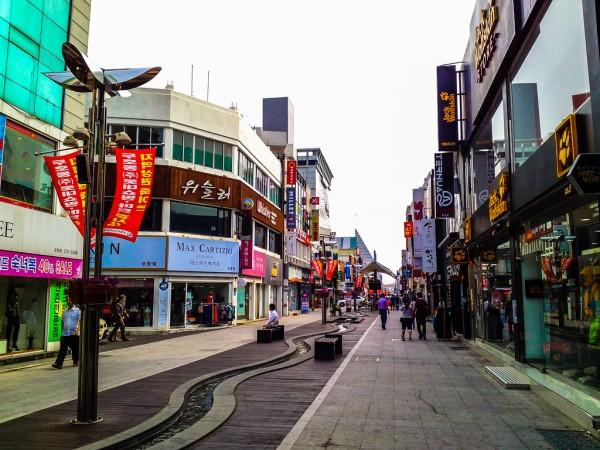
Overview of Pohang
History & Cultural Influence
The earliest evidence of human settlement in the Pohang area dates back to the Mumun Pottery Period (1500–300 BC). Archaeologists have discovered small villages and megalithic burials (dolmen) from this period, indicating the region's long history of human habitation.
During the Silla Dynasty (57 BC - 935 AD), the area that is now Pohang was made up of four villages. The region played a strategic role during the Silla period, as evidenced by the remains of the Pohang Fortress, which was built to defend against coastal invasions.
Pohang remained a small fishing village until the early 20th century. The construction of a modern harbor in 1930 marked the beginning of Pohang's transformation into a more significant city. The city grew rapidly after attaining the designation of town (eup) in 1931 and then earning the status of city (si) in 1949.
The most significant development in Pohang's history came in 1968 with the inauguration of the steel maker POSCO. The commencement of production at the local POSCO plant in 1972 brought heavy industry to the city, transforming its economy from a blend of fisheries and agriculture to one dominated by iron, steel, and shipbuilding.
Pohang's history has left a lasting impact on its culture and character. The city is home to numerous historical sites, including the Pohang Fortress, Bogyeongsa Temple, and Oeosa Temple, which showcase the region's rich heritage.
The city's cultural identity is also shaped by its annual festivals, such as the Pohang International Fireworks Festival and the Gwamegi Festival, which celebrate the city's seafaring traditions and local cuisine.
Interaction with The Locals
Pohang has a population predominantly ethnically homogeneous, with the vast majority of its inhabitants being ethnic Koreans. This ethnic uniformity is typical in many parts of South Korea, leading to a strong sense of local identity and culture. When visiting to Pohang, you can expect a warm and welcoming atmosphere when interacting with locals. Pohang's residents are accustomed to interacting with visitors, and many are eager to share their local customs, cuisine, and traditions. Engaging with locals can provide tourists with unique insights into the city's history and cultural practices. While Korean is the primary language spoken, many younger residents and those working in the tourism industry have a basic understanding of English. This can facilitate communication, although learning a few basic Korean phrases may enhance interactions.
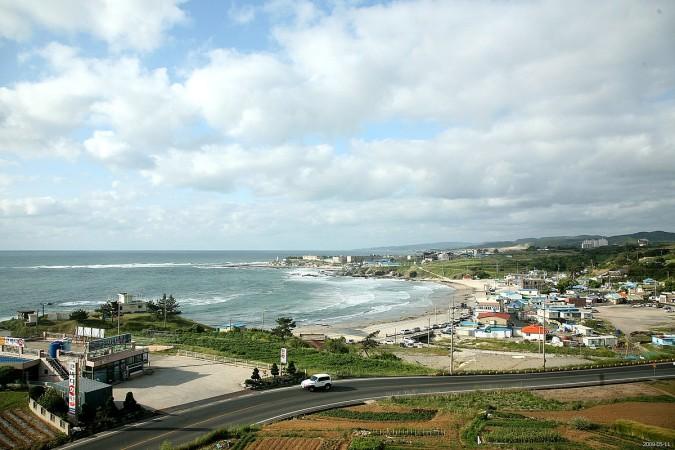
Goryongpo Beach - © Junho Jung
Top attractions in Pohang
Pohang offers travelers a mix of industrial heritage and natural beauty, with must-see attractions like the iconic Homigot Sunrise Square, where the "Hands of Harmony" sculptures greet the first sunrise of the Korean peninsula. Visitors can also explore the bustling Jukdo Fish Market for a taste of the region’s vibrant seafood culture or relax on the scenic Yeongildae Beach, a perfect spot for coastal views and leisure activities.
Hwanho Park Space Walk
Location: 30 Hwanhogongwon-gil, Pohang-si, Gyeongsangbuk-do.
The Hwanho Park Space Walk, resembling a rollercoaster, offers you stunning panoramic views of Pohang and the Sea of Japan. This interactive space museum invites you to explore the wonders of the universe in a fun and educational way.
Jukdo Fish Market
Location: 13-1 Jukdosijang 13-gil, Buk-gu, Pohang-si, Gyeongsangbuk-do
Jukdo Fish Market, one of South Korea's largest seafood markets, features over 200 vendors selling fresh seafood daily. You can choose your seafood and have it prepared on-site, making it a must-visit spot for any food lover.
Yeongildae Beach
Location: 1015 Duho-dong, Buk-gu, Pohang-si, Gyeongsangbuk-do.
Yeongildae Beach, with its beautiful sandy shores and clear waters, is perfect for swimming, sunbathing, or enjoying water sports like surfing and windsurfing. It’s an ideal place for you to relax and soak up the sun.
POSCO Art Museum
Location: 14, Donghaean-ro 6213beon-gil, Nam-gu, Pohang-si
The POSCO Art Museum showcases the impressive journey of POSCO, one of the world’s largest steel companies, in the global steel industry. As you explore, you’ll also find a variety of exhibitions featuring both traditional culture and contemporary art.
Homigot Sunrise Square
Location: 20 Haemaji-ro 150beon-gil, Homigot-myeon, Nam-gu, Pohang-si.
Homigot Sunrise Square is famous for its breathtaking sunrise views. If you’re looking for picturesque landscapes and serene morning moments, this is the place to be.
Yangdong Village
Location: 134 , Yangdongmaeul-gil, Gyeongju-si, Gyeongsangbuk-do.
Just a short drive about 2 hours from Pohang, Yangdong Village, a UNESCO World Heritage site, offers you a glimpse into traditional Korean architecture and culture from the Joseon period. It’s a perfect excursion for history enthusiasts.
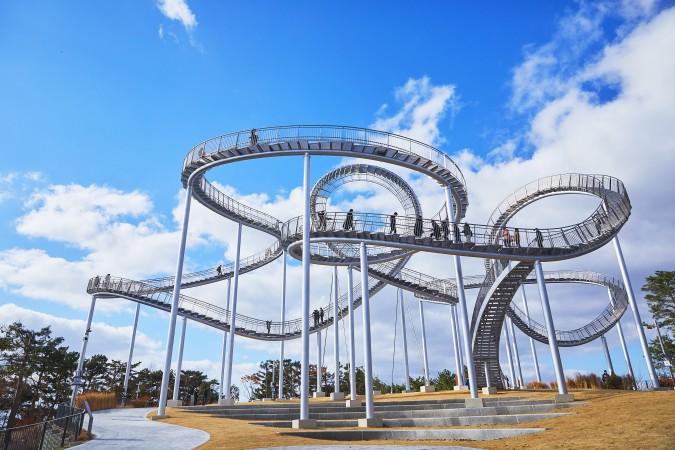
Hwanho Park Space Walk - © gather
Must-Try Dishes in Pohang
When in Pohang, you must try the refreshing milmyeon, a cold wheat noodle dish perfect for beating the summer heat, and the city’s famous mulhoe, a spicy raw fish soup that showcases the best of Pohang's coastal flavors. For a comforting meal, don’t miss galbitang, a rich beef short rib soup that’s a staple in Korean dining, offering a taste of local tradition and hospitality.
Milmyeon (밀면)
Milmyeon is a refreshing cold wheat noodle dish that's especially popular in Pohang during the hot summer months. You can enjoy it in two varieties: mul milmyeon, served in a cold broth, or bibim milmyeon, which is mixed with a spicy sauce. This dish perfectly captures the region's emphasis on cooling and satisfying meals, making it a staple in local cuisine.
Sliced Raw Fish (회, Hwae)
Given Pohang's coastal location, fresh seafood is a major part of the local diet, and sliced raw fish, or hwae, is a must-try. Served with a variety of dipping sauces and side dishes, this dish highlights the incredible freshness of the catch from the Sea of Japan, making it a delight for seafood lovers.
Galbitang (갈비탕)
Galbitang is a comforting beef short rib soup that's rich in flavor and tradition. Made by simmering beef ribs with radish and seasonings, this hearty dish is often enjoyed during family gatherings and special occasions, reflecting the communal spirit of Korean dining.
Mulhoe (물회)
Mulhoe is a cold raw fish soup that combines fresh fish with vegetables in a spicy, tangy broth. Especially popular during summer, this dish is a true reflection of Pohang's seafood culture, offering you a taste of the city's coastal flavors.
Gukbap (국밥)
Gukbap is a traditional Korean soup served with rice, often featuring various meats or seafood. In Pohang, you’ll find regional variations that highlight local ingredients, making this dish a comforting choice for a hearty breakfast or lunch.
Gwangalli-style Grilled Fish (광안리 생선구이)
Gwangalli-style grilled fish is a simple yet flavorful dish, featuring fresh fish seasoned with salt and grilled to perfection. Served with rice and a variety of dipping sauces, this dish reflects Pohang's culinary tradition of preparing seafood, making it a favorite among both locals and visitors.
Are you interested in exploring the beauty of Yeongju? Uncover the secrets of this fascinating destination in our detailed article.
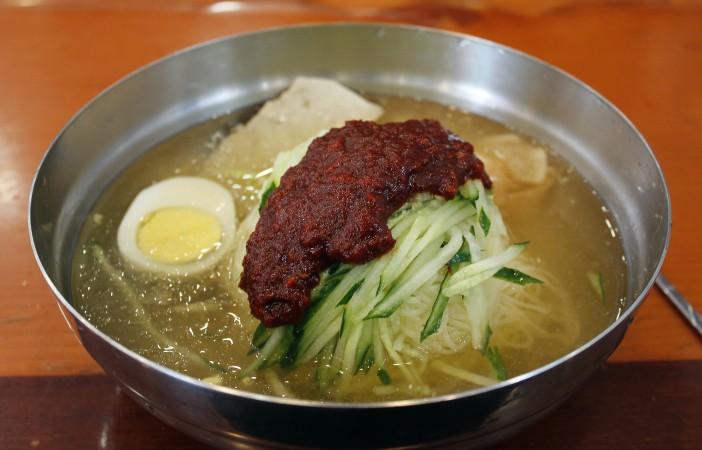
Milmyeon - © gather
Festivals & Local Celebrations
Pohang International Fireworks Festival
When: Late May (typically around the 26th to 28th)
Held annually at Yeongildae Beach, the Pohang International Fireworks Festival is a spectacular event featuring dazzling displays by both local and international pyrotechnic teams. You can enjoy stunning fireworks, street performances, light parades, and a variety of food stalls, making this festival a summer highlight that celebrates creativity and community spirit by the ocean.
Pohang Steel Art Festival
When: Autumn (September to November)
Celebrating Pohang's identity as a steel production hub, the Pohang Steel Art Festival blends art with industry. You can explore steel art exhibitions, enjoy cultural performances, and even participate in workshops to create your own steel art. This festival showcases the artistic potential of industrial materials and strengthens the connection between the community and local artists.
Gwamegi Festival
When: November
The Gwamegi Festival, held in the Guryongpo district of Pohang, celebrates the local specialty of gwamegi, a dried mackerel delicacy. The festival offers traditional games, performances, and food stalls featuring gwamegi and other local seafood. It’s a wonderful way for you to experience local cuisine and immerse yourself in traditional Korean culture.
Pohang International Film Festival (PIFF)
When: Typically in October
The Pohang International Film Festival brings together a diverse range of international films, promoting cultural exchange through cinema. You can enjoy film screenings, panel discussions, and opportunities to meet filmmakers, making this festival a significant event in Pohang's cultural calendar and a must-visit for film enthusiasts.
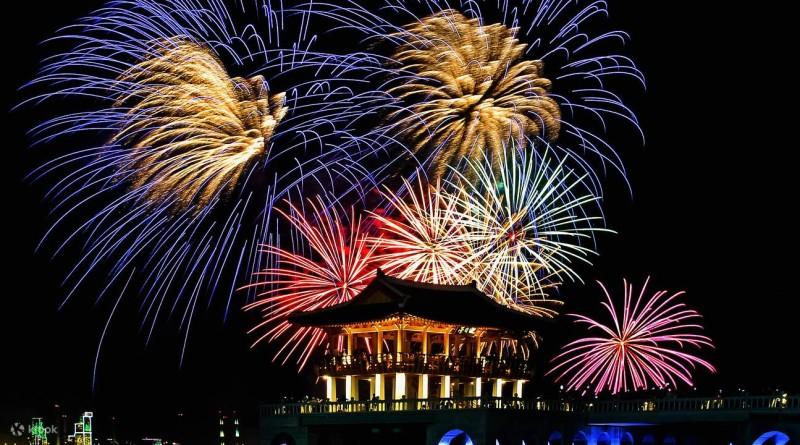
Pohang International Fireworks Festival - © gather
Weather in Pohang: Best Time to Visit
Pohang experiences a humid subtropical climate with distinct seasons, influencing the best times to visit.
Average Temperatures
- Winter (December to February): January is the coldest month, with average temperatures around 2.2°C (36°F) and lows reaching -1.5°C (29.3°F).
- Spring (March to May): Temperatures gradually rise from 8.6°C (47.5°F) in March to 18.6°C (65.5°F) by May.
- Summer (June to August): August is the warmest month, with averages of 26.0°C (78.8°F) and highs up to 31°C (87.8°F).
- Autumn (September to November): Temperatures cool from 22.0°C (71.6°F) in September to 11°C (51.8°F) in November.
Rainfall
Pohang receives about 1,152 mm (45.4 inches) of rainfall annually, with August being the wettest month, averaging 227.4 mm (8.95 inches). December is the driest, with just 25.7 mm (1 inch) of rain.
Best Time to Visit
The best times to visit Pohang are during Spring (April to June) and Autumn (September to October), when you can enjoy mild temperatures and lower humidity, perfect for outdoor activities and sightseeing. Summer, while warm and lush, can be hot and humid with heavy rains, especially in August. Winter, though cold, offers a quieter, more serene experience for those who appreciate the charm of the season.
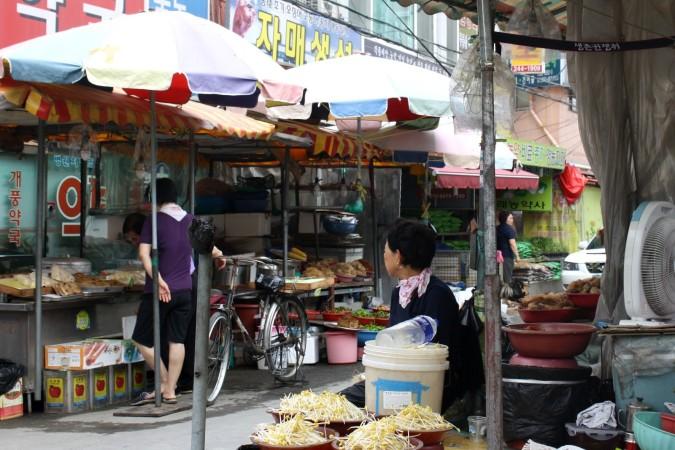
Jukdo Fish Market - © gather
Essential Travel Information
Getting to Pohang
By Air
Pohang Gyeongju Airport is located about 10 km east of the city and offers domestic flights to Seoul Gimpo Airport and Jeju Island. From the airport, visitors can take city bus 200 towards Guryongpo to reach the city center.
By Train
Pohang is accessible via the KTX high-speed train, which connects the city to major cities like Seoul and Busan.
- From Seoul: The journey takes approximately 2.5 to 3 hours.
- From Busan: The trip lasts about 1.5 to 2 hours.
The train station is located north of the city center, making it convenient for travelers.
By Bus
Pohang has two main bus terminals:
- Gosok Bus Terminal (고속버스터미널): Serves express buses to major cities, including Seoul and Gwangju.
- Shiwae Bus Terminal (시외버스터미널): Handles intercity buses to nearby areas like Daegu and Busan.
Buses from Seoul to Pohang take around 4 hours and are a more economical option compared to trains.
Getting Around Pohang
Public Transit
Pohang does not have a subway system, but it has an extensive bus network that is the primary mode of public transportation.
Types of Buses:
- Ilban-bus (일반버스): Regular buses that are cheaper.
- Jwaseok-bus (좌석버스): Seat buses that are slightly more expensive and offer more comfortable seating.
- Buses run every 15 to 25 minutes and cover various routes throughout the city.
Taxis
Taxis are readily available and relatively inexpensive within Pohang. The base fare starts at 2,200 won (approximately $2) and increases based on distance and time. Taxis are a convenient option for reaching destinations not easily accessible by bus.
ATMs and Banking
In Pohang, major banks like Shinhan Bank, KB Kookmin Bank, and KEB Hana Bank have ATMs conveniently located throughout the city, including at Pohang Station and bus terminals. Most ATMs accept international cards such as Visa, Mastercard, and JCB, but it's wise to check with your bank regarding overseas withdrawal fees and limits. Bank branches typically operate Monday to Friday, from 9:00 am to 4:00 pm, with some offering extended hours or weekend services.
Accommodation
Pohang provides a variety of accommodation options to fit different budgets and preferences:
- Hotels: You’ll find mid-range and upscale hotels in Pohang, including well-known chains like Best Western, Ramada, and Benikea. Nightly rates generally range from 100,000 to 300,000 won, depending on the location and amenities.
- Motels/Love Hotels: For budget-conscious travelers, motels and love hotels are abundant, particularly in the city center. These options typically cost between 30,000 to 80,000 won per night.
- Guesthouses: Smaller, locally-owned guesthouses offer affordable stays, often with shared bathrooms. Prices usually fall between 20,000 to 50,000 won per night.
- Airbnb: Vacation rentals and homestays are also available through Airbnb, with prices varying based on the type of accommodation. Entire apartments start around 50,000 won per night, while private rooms tend to be more economical.
- Camping: If you prefer the outdoors, camping is an option at designated campgrounds near beaches and parks. Fees are very reasonable, typically under 10,000 won per person.
Dive into the charm and history of Gongju, a must-see locale in South Korea, through the carefully crafted insights that are available here.
Articles for you

Experience Aboard The RV Indochine II - A Mekong Cruise With Tweet World Travel
The RV Indochine II is a luxury river cruise ship, offering an unforgettable journey through many attractions along the Mekong River. Built in 2017, this upscale vessel combines colonial elegance with modern conveniences to create a comfortable yet stylish environment for its crew and passengers. The ship’s intimate size makes it ideal for those seeking a more personal cruising experience while exploring Vietnam and Cambodia rich culture, scenery, and heritage. Whether you're gazing at the landscape from your private balcony or enjoying authentic local cuisine, RV Indochine II promises an exotic adventure like no other.

Witness Stilt Fishing In Sri Lanka: An Eco-Tourism Experience
Sri Lanka, renowned for its stunning beaches and rich cultural heritage, harbors a unique tradition that has captivated travelers for centuries: stilt fishing. This ancient practice, passed down through generations of coastal communities, blends artistry with necessity, offering a glimpse into a way of life intimately connected to the island's coastal rhythms. Stilt fishing in Sri Lanka isn't merely a means to catch fish; it's a cultural emblem, embodying the resilience and ingenuity of Sri Lanka's fishing communities.

Make Your Trip Stress-Free With The Tweet Trip App
Embark on your next adventure with confidence by downloading the Tweet Trip App, available for both iOS and Android. This essential travel companion allows you to view your detailed itinerary, stay connected with your tour guide and fellow travelers, receive real-time updates, and provide feedback effortlessly. With features like in-app messaging, emergency assistance, and location sharing, the Tweet Trip App ensures you travel smarter, stay connected, and enjoy a seamless, worry-free journey. Get started today and make the most of your travel experience with Tweet World Travel.

Pedal Through Paradise: Unveiling Cambodia's Hidden Gems on Two Wheels
The gentle whir of bicycle wheels mingles with the distant chants of monks as you glide past emerald rice paddies stretching to the horizon. This is Cambodia - a sensory explosion waiting to be experienced on two wheels. At Tweet Tours, we believe there's no better way to immerse yourself in the Kingdom of Wonder than by bicycle.
Cambodia isn't just a destination; it's a living, breathing tapestry of ancient wonders, natural beauty, and vibrant culture. Our carefully crafted cycling tours take you beyond the typical tourist haunts, offering a unique perspective on this captivating country. Ready to clip in and discover the magic of Cambodia? Let's ride!

Trekking in the Himalayas: A Journey Through Nepal's Majestic Peaks
The Himalayas rise from the earth like colossal guardians, their snow-capped peaks piercing the sky in a display of nature's raw power and beauty. Nepal, nestled at the heart of this mountain range, serves as the gateway to some of the most breathtaking trekking experiences on the planet. Here, the air is crisp and thin, filled with the promise of adventure and the whispers of ancient tales.
With Tweet Tours, as you set foot on these hallowed trails, you're not just a traveler - you're a modern-day explorer, following in the footsteps of legendary mountaineers and age-old traders. Each step takes you further into a world where nature reigns supreme and human resilience is tested against the backdrop of some of the world's highest peaks.
From the moment your boots touch the ground in Kathmandu, you'll feel the pull of the mountains. The bustling streets of the capital, with their sensory overload of sights, sounds, and smells, soon give way to serene mountain paths where the only soundtrack is the crunch of gravel underfoot and the distant tinkling of yak bells.

Exploring Mui Ne's Wonders: Unique Attractions & Local Dishes
Nestled along the southeastern coast of Vietnam, Mui Ne emerges as a captivating gem, blending natural wonders with cultural richness. Renowned for its stunning landscapes and unique attractions, Mui Ne beckons travelers seeking both relaxation and adventure in equal measure. Mui Ne's renowned beach dunes, bustling fishing towns, and excellent local food await exploration at every turn.
The allure of Mui Ne lies not only in its pristine beaches and crystal-clear waters but also in its diverse range of activities catering to every traveler's whims. Whether you're drawn to thrilling water sports like kitesurfing and windsurfing on its dynamic shores or seeking tranquility amidst the picturesque Fairy Stream, Mui Ne promises an unforgettable journey filled with discovery.
